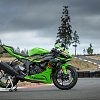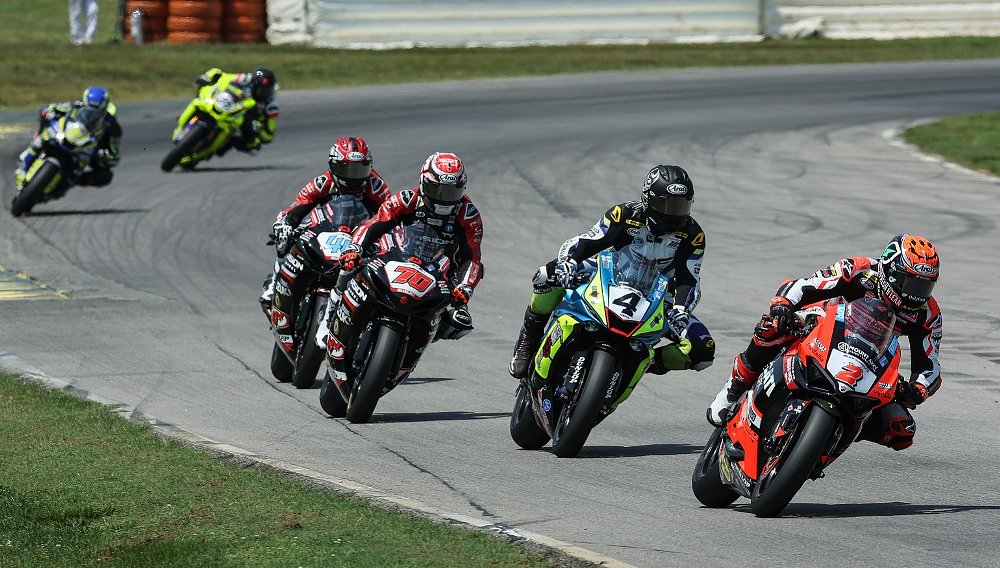Supersport is dead. So it is bemoaned in numerous articles, blogs, and interviews in racing paddocks worldwide. Kawasaki, however, appears unfazed by this kind of talk.
Sport bike sales remain strong at Team Green. The popularity of Kawasaki’s lightweight sport bikes, like the Ninja 400 and the newly debuted ZX-4RR, is readily apparent as units are vanishing from dealer showroom floors. While a Kawasaki spokesperson admitted the 1,000 cc superbike segment is “not a growth area,” they shared that the ZX-6R supersport has been a consistent seller throughout the years and the current 2024 ZX-6R we were about to ride was already “above plan” in terms of sales.

It can be argued that the ZX-6R is a model that defines the supersport 600 cc class. Even non-riders can identify the electric lime green bike and know it is named the “Ninja.” The 636 cc platform has been at home in stunt shows and pro racing grids alike, thanks to that little nudge in extra displacement over its contemporaries. For the sport bike enthusiast, the ZX-6R is well known and a new question nibbles at the back of their brain — should they buy a ZX-4RR instead?
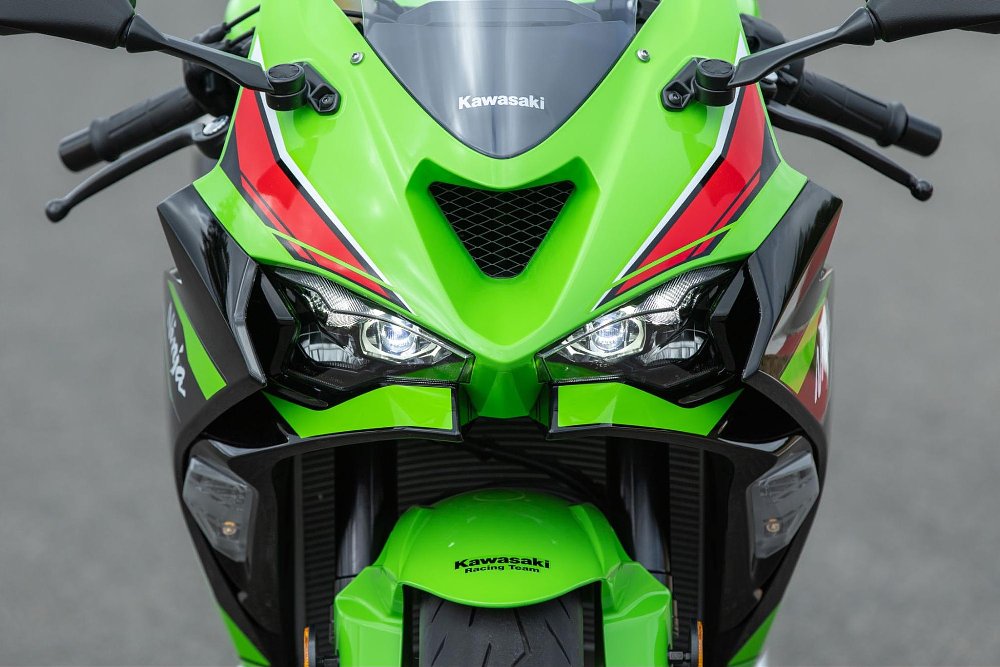
Pin that comparison for later and, for now, focus instead on the new 2024 Kawasaki Ninja ZX-6R. What exactly is new on this year's middleweight from Team Green?
Minor updates to the ZX-6R
The first obvious update is to the bodywork and styling of the ZX-6R. The front cowling has evolved to match the aesthetics of the latest generation ZX-10R and enjoys the perks of new LED headlights and turn signals.
Next, the 2024 ZX-6R gets an upgrade to a TFT dash and other technical features like pre-coded rider maps and compatibility with Kawasaki’s RIDEOLOGY mobile app.
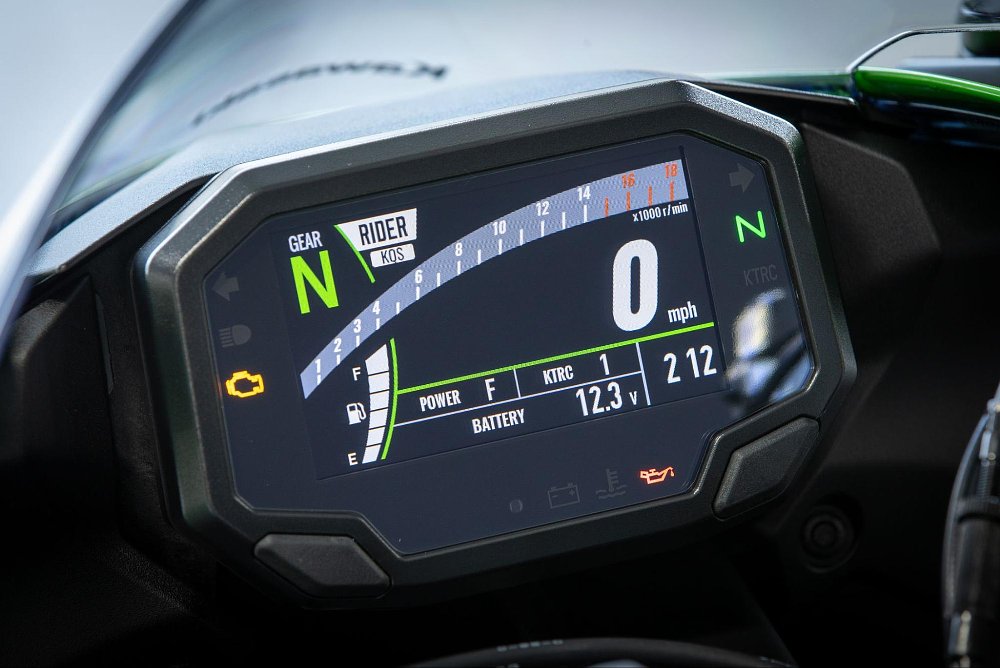
Finally, minute changes to the cam profiles, intake funnel, header pipes, and O2 sensor are aimed at not only meeting Euro 5 emission standards, but also massaging the low-to-mid-range power delivery from the 636 cc engine.
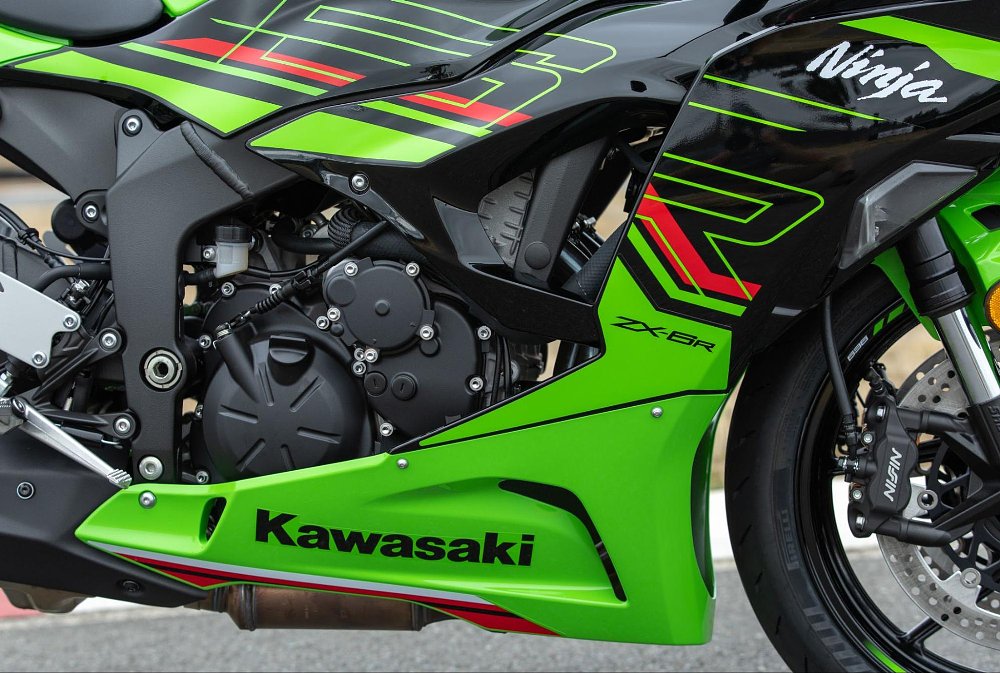
It isn’t exactly an overhaul of the Ninja ZX-6R, but it’s hard to fault Kawasaki for not seeing the need to make drastic changes to an already beloved supersport in a field of 600s that is shrinking and stagnating. After all, its most popular foe, the Yamaha YZF-R6, has been retired to non-street duties as the YZF-R7 parallel twin becomes its anemic replacement.
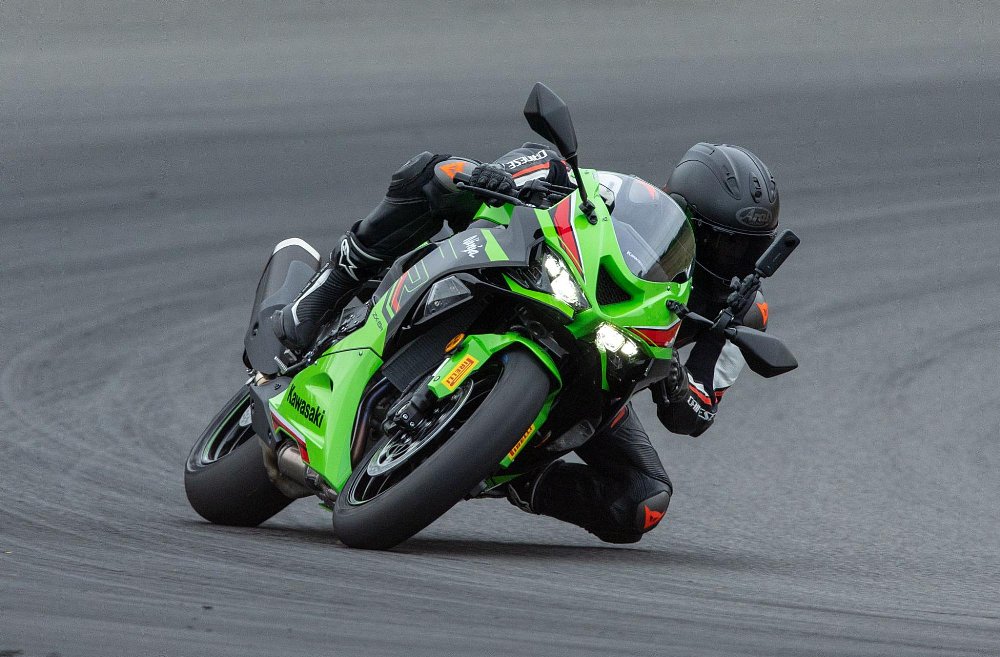
On the track
Kawasaki brought the media north to The Ridge in Washington state to test the racing DNA of the ZX-6R. The “newish” track hosts several exciting elevation changes, blind crests, and a corkscrew-like turn that pays homage to the famed feature at Laguna Seca. There was only one small problem — the Pacific Northwest is known for rain, and it was coming straight for us.
The riding itinerary was scrambled, favors called in at the race track and we were granted a special after-hours riding session while the track was still dry. The sped-up timetable created an electric charge in the garages. A Kawasaki technician dialed in my settings, slick tires from Pirelli were wrapped in tire warmers and turned up to hot, and my Dainese D-Air suit blinking "armed" gave me pre-race jitters I haven't felt in ages. This time, I was on an unfamiliar bike, on a track I had never seen before, and in a race against time itself.
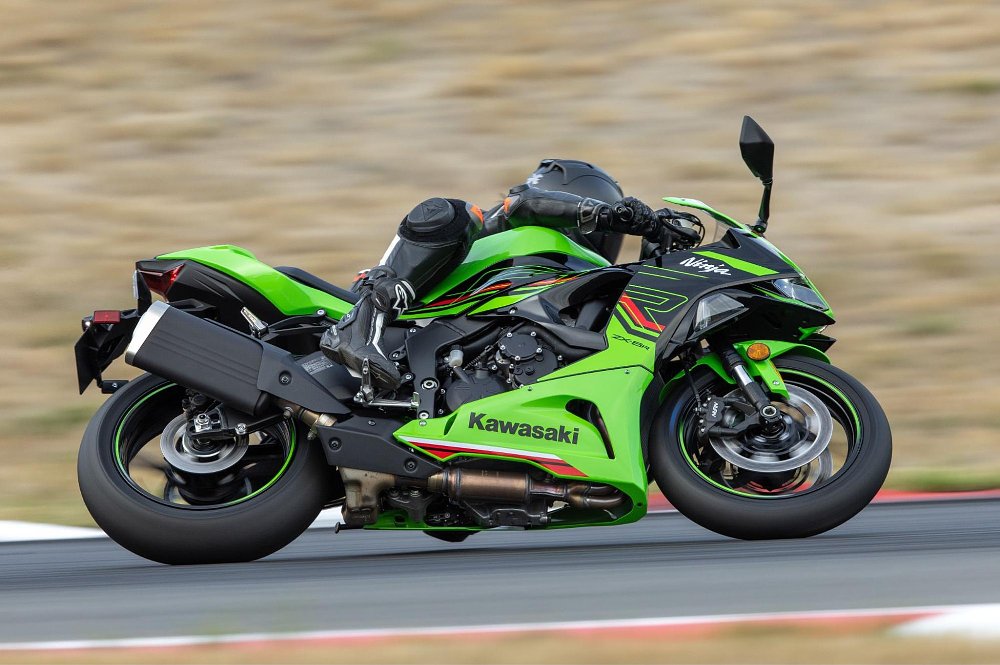
With a sighting lap out of the way, it was up to the ZX-6R and I to figure out this new track. Like a nervous couple at a first dance lesson, I shepherded the green machine around those early tentative laps as I tried to build a mental picture of the track. I may have stepped on the ZX-6R's toes in the beginning, but it was an accommodating bike for those few awkward moments. In a gear too high, it still maintained usable power, in mid-corner corrections, the chassis stayed composed, and the throttle response was far gentler than what I experience on my R6 at home.
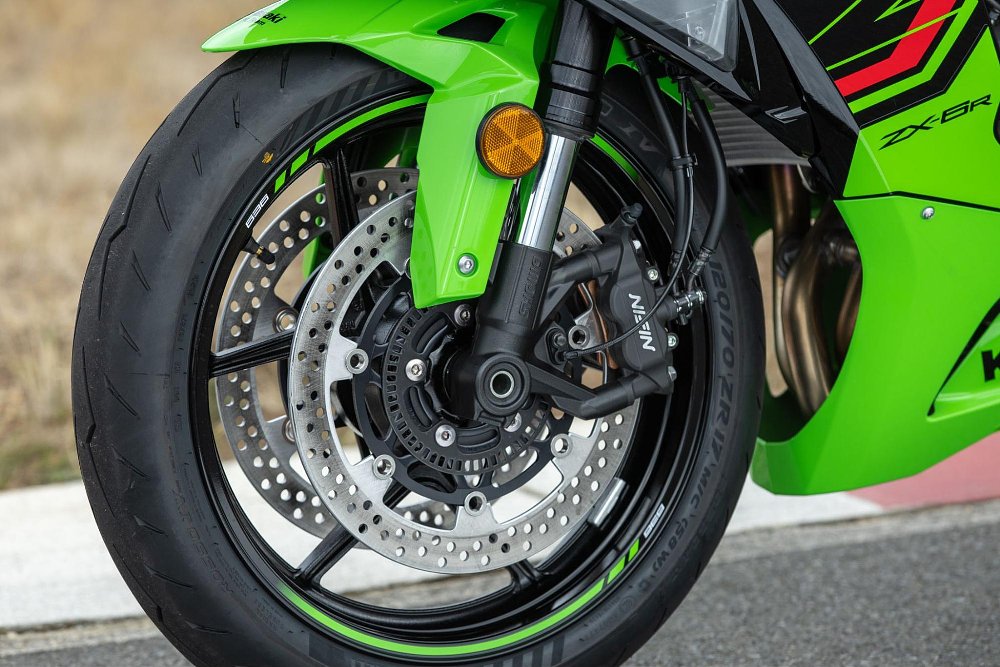
As the sun began to dip in the sky, the pace was ramping up on the track. Full-send knee dragging, deep trail braking, and pounding through the upshifts were all on the menu. I didn’t think I would get this comfortable so fast on the ZX-6R, but here we were, sashaying around The Ridge with joyful exuberance. The middleweight Ninja may not have the IMU fancy-pants electronics of the ZX-10R, but the equipped traction control, ABS, quickshifter, and slip-assist clutch are still plenty adequate for the average track-day rider. All too soon, dusk blanketed the track and the checkered flag was flown as we pulled into the pits only by the light of our headlights in the dark pines.
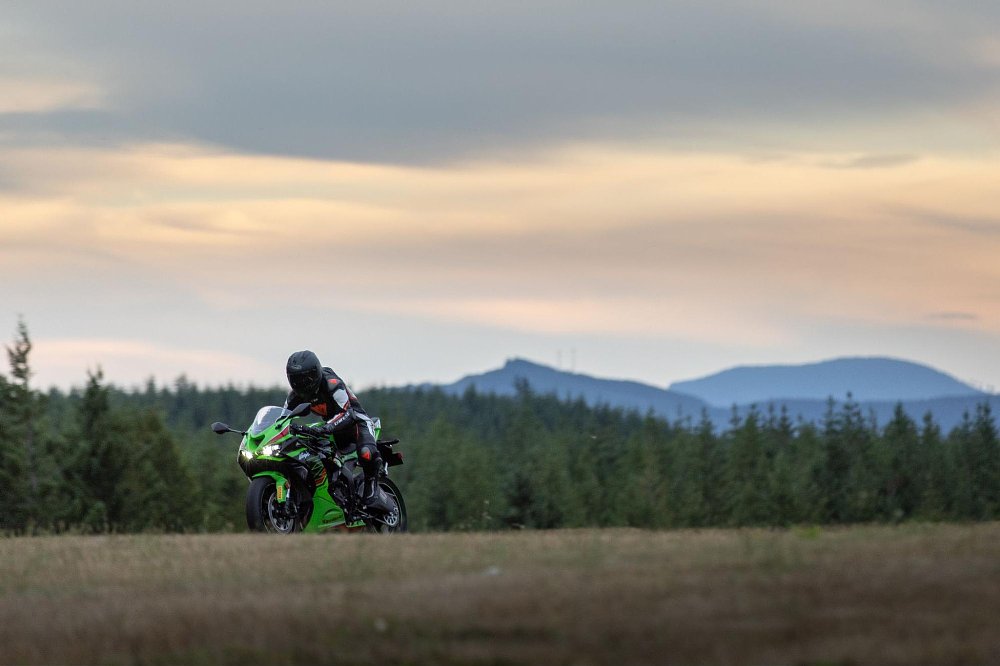
It was a much shorter ride time than I would prefer but my impression is this — the ZX-6R lives up to its name and is still a worthy track companion. It is agile and the chassis is well sorted, the brakes are not bitey but overall good, and the power and speed of the 636 engine is more than enough to make one’s heart go pitter-patter.
Street speculations
The Ninja’s theme for this year was “supersport obsession,” and although Kawasaki wanted to celebrate the racing heritage of the ZX-6R, there is also the underlying knowledge that for a majority of riders, the middleweight Ninja will live most of its life on the street.
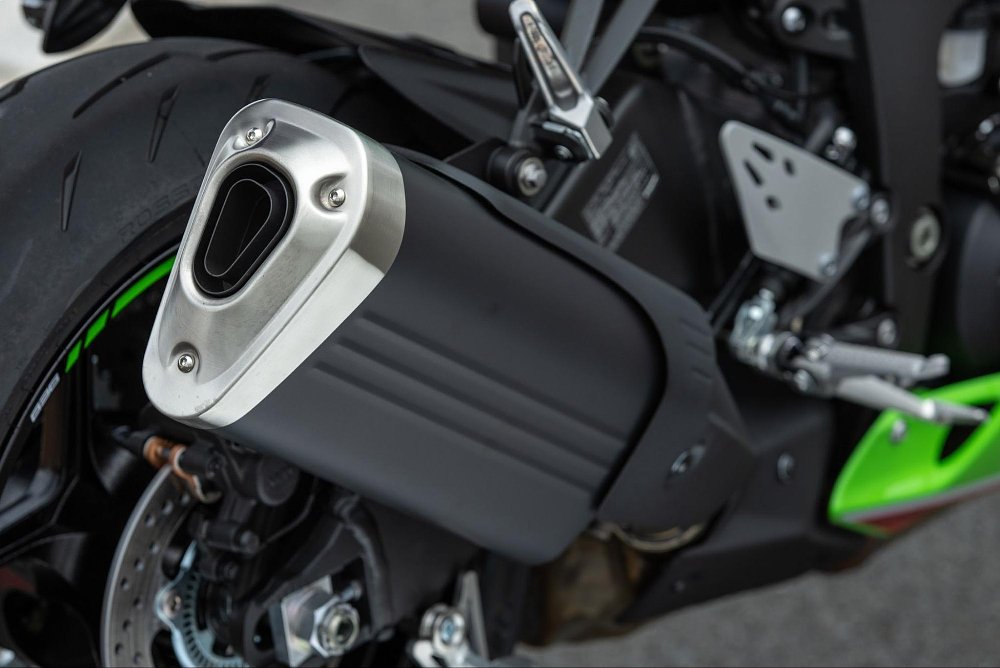
It explains why Kawasaki has focused energy on making the inline-four more street-friendly, chasing down whatever small tweaks are left available to optimize low-to-mid-range performance. The 636 cc powerplant was already known for being less high-strung than the 600 cc inline screamers, and the revised cams and intake only solidify that position. My experience with the ZX-6R is that the throttle is not snappy at all. Experimenting with it in the garage to conduct an exhaust sound check, it surprised me with some finicky bogging and stallouts. I had no indications of this issue on the track, but it raised some questions. How might this play out for slow city-street stop-and-go riding? Is this a fuel mapping issue? Anomaly to my bike in particular?
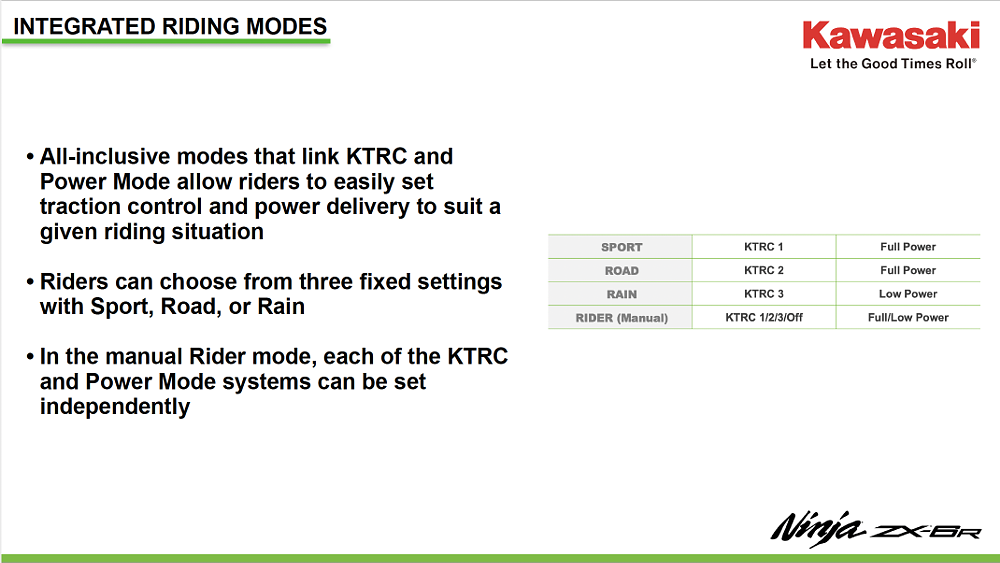
The updated aesthetics to the bodywork are sure to please and so is the full-color TFT dash. Less impressive are the ride modes and RIDEOLOGY app. There was a lot of fanfare about the ride modes, how it was new to the ZX-6R, but ride modes are practically an industry standard at this point. As my colleague Zack pointed out when he tested the ZX-4RR, the toggles and long button holds make the ride mode changes clunky and awkward.
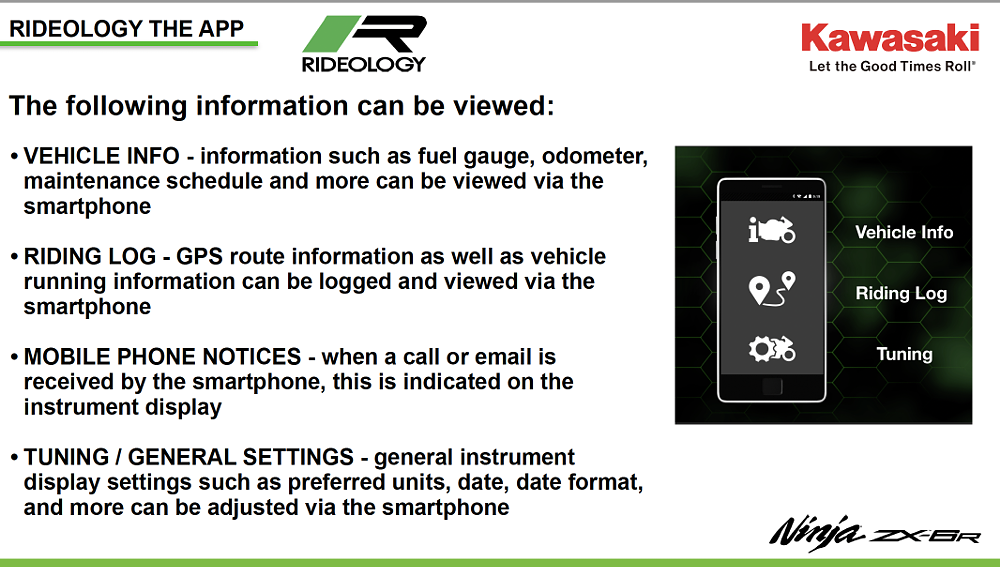
As for the RIDEOLOGY app, I made use of the rain delay to download the app and go through the motions of pairing my phone and exploring its features on my ZX-6R. The app isn’t helpful in describing the pairing process, but lucky for me I had a Kawasaki rep by my side to walk me through it. With the app paired to the bike, I could toggle through the different menus but honestly found little value in most of the features. The most talked-about feature, being able to switch ride modes in the app and have it sync to the motorcycle, was not successfully replicated, despite my attempts. I like the “Vehicle Information” screen for tracking total time and service intervals, the “Riding Log” is moot when I have the REVER app with more functionality, and the “Tuning” app leaves a big chip on my shoulder as the newest little baby brother — the ZX-4RR — has dedicated “Circuit” features unlocked but the ZX-6R does not.
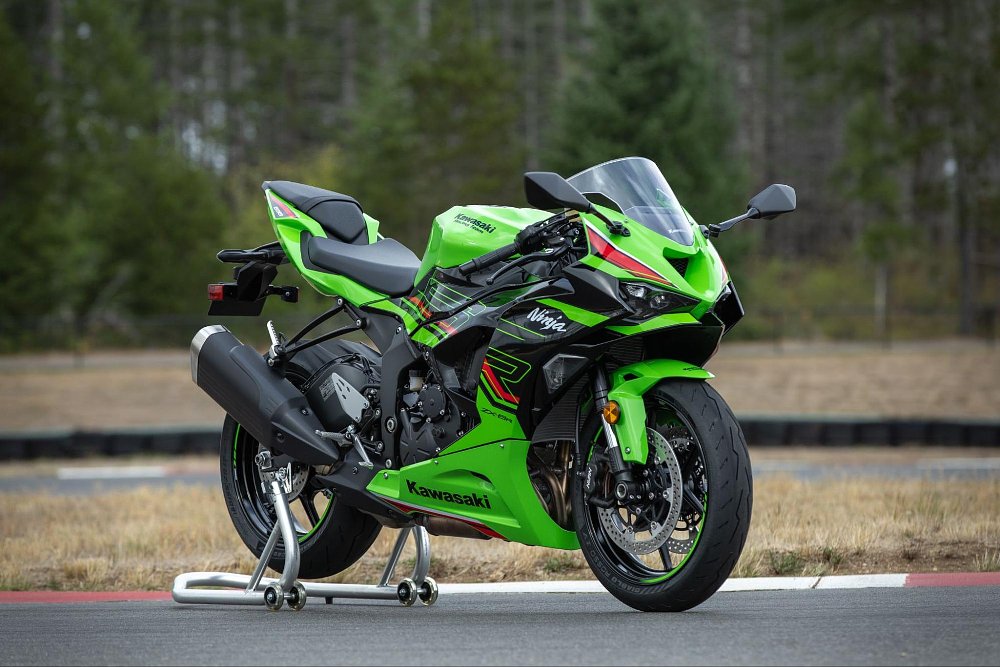
Overshadowed by the younger brother
There is no escaping the ZX-4RR in this conversation. The ZX-10RR sits comfortably on the top step of the racing Ninja lineup, receiving all of the technological advancements and high-end componentry that the most powerful superbike deserves. The ZX-6R is undeniably head and shoulders above the Ninja 400, with a race pedigree and furnishings to prove its worthiness in the Ninja hierarchy.
But now the ZX-6R is locked in a tug of war battle with the new younger sibling, the ZX-4RR, which is hogging all the attention. The fact that the newest edition comes in with the racing designation of “RR,” while there are no foreseeable plans to produce a ZX-6RR, is telling. I conducted an unofficial poll and found many riders and Kawasaki reps alike agreed that the ZX-4RR is a better choice for serious track-day enthusiasts. A consensus felt the ZX-6R makes a more reasonable street choice for its “metered” throttle response and additional horsepower for freeway commuting. For now, the ZX-6R clings on to the well established Supersport class in the club-racing scene with the support of heaps of contingency money from Kawasaki and a deep aftermarket catalog.
The ZX-6R is the same competent bike it has been through the generations. The question is now though — is that good enough?
| 2024 Kawasaki Ninja ZX-6R | |
|---|---|
| Price (MSRP) | $11,299; $12,299 with ABS |
| Engine | 636 cc, liquid-cooled, DOHC, 16-valve, inline four cylinder |
|
Transmission, final drive |
Six-speed with Kawasaki quickshifter (upshift only), chain |
| Horsepower | NA |
| Torque | 52.1 foot-pounds @ 11,500 rpm |
| Frame | Aluminum perimeter |
| Front suspension | Showa Separate Function Fork-Big Piston, 41 mm inverted cartridge-type fork, adjustable for preload, stepless compression and rebound damping; 4.7 inches of travel |
| Rear suspension | Uni-Trak with adjustable preload, 25-way rebound damping, stepless high- and low-speed compression damping, adjustable ride height; 5.9 inches of travel |
| Front brake | Dual 310 mm discs with radial-mount, four-piston calipers; ABS (KIBS) optional |
| Rear brake | Single 210 mm disc, single-piston caliper; ABS (KIBS) optional |
| Wheelbase | 55.1 inches |
| Seat height | 32.7 inches |
| Fuel capacity | 4.5 gallons |
| Tires | Pirelli Diablo Rosso IV, 120/70-ZR17 front, 180/55-ZR17 rear |
| Measured wet weight | 430 pounds |
| Available | Now |
| Warranty | 12 months |
| More info | kawasaki.com |





